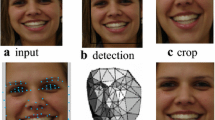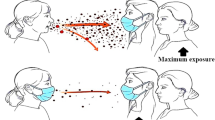Abstract
The investigation of demographic bias in facial analysis applications is a topic of growing interest with achievements in face recognition and gender classification. State-of-the-art convolutional neural networks (CNN) and traditional machine learning models for locating facial landmarks have reached overall performance levels close to human annotation. However, recent studies demonstrated that these models presented performance gaps when applied to different populations, characterizing bias led by demographic features. Nevertheless, few studies have addressed this problem in face alignment and facial landmarks localization methods. In this work, we propose a multi-level face alignment approach settled on CNN models to reduce performance gaps among different populations. We created facial subunit CNN models tied to a facial subunit detector at a higher level. The proposal seeks to improve bad results caused by facial impairment, guided by the following assumptions: facial unit landmarks localization does not require global texture, and combining different facial unit models can improve the final model’s variability. We applied the models in a balanced dataset mixing healthy controls and individuals with neurological disorders: amyotrophic lateral sclerosis and post-stroke. With fewer samples for training, our approach significantly reduced face alignment performance differences among those groups as compared to a state-of-the-art CNN model.











Similar content being viewed by others
References
Bandini A, Rezaei S, Guarín DL et al. (2021) A new dataset for facial motion analysis in individuals with neurological disorders. IEEE J Biomed Health Inform 25(4):1111–1119. https://doi.org/10.1109/JBHI.2020.3019242
Bulat A, Tzimiropoulos G (2017) How far are we from solving the 2d & 3d face alignment problem? (and a dataset of 230,000 3d facial landmarks). In: 2017 IEEE international conference on computer vision (ICCV), pp 1021–1030, https://doi.org/10.1109/ICCV.2017.116
Buolamwini J, Gebru T (2018) Gender shades: Intersectional accuracy disparities in commercial gender classification. In: Friedler SA, Wilson C (eds) Proceedings of the 1st conference on fairness, accountability and transparency, proceedings of machine learning research, vol 81 PMLR, New York, USA, pp 77–91, http://proceedings.mlr.press/v81/buolamwini18a.html
Cao D, Chen C, Piccirilli M, et al. (2011) Can facial metrology predict gender? In: 2011 International Joint Conference on Biometrics (IJCB), pp 1–8, https://doi.org/10.1109/IJCB.2011.6117471
Citron D, Pasquale F (2014) The scored society: due process for automated predictions. Washington Law Rev 89:1–33
Cootes T, Taylor C, Cooper D et al. (1995) Active shape models-their training and application. Comput Vis Image Underst 61(1):38–59. https://doi.org/10.1006/cviu.1995.1004
Drozdowski P, Rathgeb C, Dantcheva A et al. (2020) Demographic bias in biometrics: a survey on an emerging challenge. IEEE Trans Technol Soc 1(2):89–103. https://doi.org/10.1109/TTS.2020.2992344
Du C, Wu Q, Yang J, et al. (2008) Svm based asm for facial landmarks location. In: 8th IEEE international conference on computer and information technology (CIT ‘08), pp 321–326, https://doi.org/10.1109/CIT.2008.4594695
Dunn OJ (1961) Multiple comparisons among means. J Am Stat Assoc 56(293):52–64
Garcia RV, Wandzik L, Grabner L, et al. (2019) The harms of demographic bias in deep face recognition research. In: 2019 international conference on biometrics (ICB), pp 1–6, https://doi.org/10.1109/ICB45273.2019.8987334
Georgopoulos M, Panagakis Y, Pantic M (2020) Investigating bias in deep face analysis: the kanface dataset and empirical study. Image Vis Comput 102(103):954
Georgopoulos M, Oldfield J, Nicolaou MA et al. (2021) Mitigating demographic bias in facial datasets with style-based multi-attribute transfer. Int J Comput Vision 129(7):2288–2307
Gross R, Matthews I, Cohn J et al. (2010) Multi-pie. Image Vision Comput 28(5):807–813. https://doi.org/10.1016/j.imavis.2009.08.002
Hsu CF, Lin CC, Hung TY, et al. (2020) A detailed look at cnn-based approaches in facial landmark detection. arXiv:2005.08649
Hsu RL, Abdel-Mottaleb M, Jain AK (2002) Face detection in color images. IEEE Trans Pattern Anal Mach Intell 24(5):696–706. https://doi.org/10.1109/34.1000242
Hupont I, Fernández C (2019) Demogpairs: Quantifying the impact of demographic imbalance in deep face recognition. In: 2019 14th IEEE international conference on automatic face gesture recognition (FG 2019), pp 1–7, https://doi.org/10.1109/FG.2019.8756625
Johnston B, Chazal P (2018) A review of image-based automatic facial landmark identification techniques. EURASIP J Image Video Process 2018:86. https://doi.org/10.1186/s13640-018-0324-4
Karras T, Laine S, Aittala M, et al. (2020) Analyzing and improving the image quality of stylegan. In: 2020 IEEE/CVF conference on computer vision and pattern recognition (CVPR), pp 8107–8116, https://doi.org/10.1109/CVPR42600.2020.00813
Kruskal WH, Wallis WA (1952) Use of ranks in one-criterion variance analysis. J Am Stat Assoc 47(260):583–621. https://doi.org/10.1080/01621459.1952.10483441
Le V, Brandt J, Lin Z et al. (2012) Interactive facial feature localization. In: Fitzgibbon A, Lazebnik S, Perona P et al. (eds) Computer vision - ECCV 2012. Springer, Berlin Heidelberg, Berlin, Heidelberg, pp 679–692
Milborrow S (2007) Locating facial features with active shape models. Master’s thesis, Faculty of Engineering, University of Cape Town, Cape Town, South Africa
Milborrow S (2016) Multiview Active Shape Models with SIFT Descriptors. Doctoral thesis, Department of Image Processing, University of Cape Town, Cape Town, South Africa
Milborrow S, Nicolls F (2014) Active shape models with sift descriptors and mars. In: 2014 international conference on computer vision theory and applications (VISAPP), pp 380–387
Moghaddam B, Yang MH (2000) Gender classification with support vector machines. In: proceedings fourth IEEE international conference on automatic face and gesture recognition (Cat. No. PR00580), pp 306–311, https://doi.org/10.1109/AFGR.2000.840651
Pantic M, Rothkrantz LJM (2000) Automatic analysis of facial expressions: the state of the art. IEEE Trans Pattern Anal Mach Intell 22(12):1424–1445. https://doi.org/10.1109/34.895976
Sagonas C, Antonakos E, Tzimiropoulos G et al. (2016) 300 faces in-the-wild challenge: database and results. Image Vis Comput 47:3–18. https://doi.org/10.1016/j.imavis.2016.01.002
Seshadri K, Savvides M (2009) Robust modified active shape model for automatic facial landmark annotation of frontal faces. In: IEEE 3rd international conference on biometrics: theory, applications, and systems (BTAS ‘09), pp 1–8, https://doi.org/10.1109/BTAS.2009.5339057
Sun Y, Wang X, Tang X (2013) Deep convolutional network cascade for facial point detection. In: 2013 IEEE conference on computer vision and pattern recognition, pp 3476–3483, https://doi.org/10.1109/CVPR.2013.446
Taati B, Zhao S, Ashraf AB, et al. (2019) Algorithmic bias in clinical populations-evaluating and improving facial analysis technology in older adults with dementia. IEEE Access 7:25,527–25,534. https://doi.org/10.1109/ACCESS.2019.2900022
Turk M, Pentland A (1991) Face recognition using eigenfaces. In: IEEE conference on computer vision and pattern recognition (CVPR ‘91). IEEE, pp 586–591
Wang C (2019) The development and challenges of face alignment algorithms. J Phys Conf Ser 1335(1):12. https://doi.org/10.1088/1742-6596/1335/1/012009
Wu W, Protopapas P, Yang Z, et al. (2020) Gender classification and bias mitigation in facial images. In: 12th ACM conference on web science. Association for computing machinery, New York, USA, WebSci ’20, pp 106–114
Xu Z, Li B, Geng M et al. (2021) Anchorface: An anchor-based facial landmark detector across large poses. Proceedings of the AAAI conference on artificial intelligence 35:3092–3100. https://doi.org/10.1609/aaai.v35i4.16418
Yang J, Liu Q, Zhang K (2017) Stacked hourglass network for robust facial landmark localisation. In: 2017 IEEE conference on computer vision and pattern recognition workshops (CVPRW), pp 2025–2033, https://doi.org/10.1109/CVPRW.2017.253
Author information
Authors and Affiliations
Corresponding author
Additional information
Publisher's Note
Springer Nature remains neutral with regard to jurisdictional claims in published maps and institutional affiliations.
Rights and permissions
Springer Nature or its licensor (e.g. a society or other partner) holds exclusive rights to this article under a publishing agreement with the author(s) or other rightsholder(s); author self-archiving of the accepted manuscript version of this article is solely governed by the terms of such publishing agreement and applicable law.
About this article
Cite this article
Freitas, R.T., Aires, K.R.T., de Paiva, A.C. et al. A CNN-based multi-level face alignment approach for mitigating demographic bias in clinical populations. Comput Stat (2023). https://doi.org/10.1007/s00180-023-01395-9
Received:
Accepted:
Published:
DOI: https://doi.org/10.1007/s00180-023-01395-9




